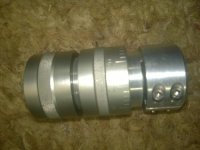Mike Bryant
Active member
Mike, we're saying the same thing. A barrel that is .900" at the muzzle is 2.82" in circumference. 2.82/32 = .088". I turn the tuner about a .1" on the circumference. I just don't have it marked on the tuner. Your tuner with 32 marks moves about .088" on the circumference. We are both making about the same amount of movement when making the adjustment. I start with the tuner at the back of the threads and then lock it down when I get it shooting best. Really doubt if I've even had to move it as much as a half turn probably at most a 1/4 turn to get it to shoot. Same exact thing you're saying. I just haven't been going on until it goes out of tune and comes back in.




